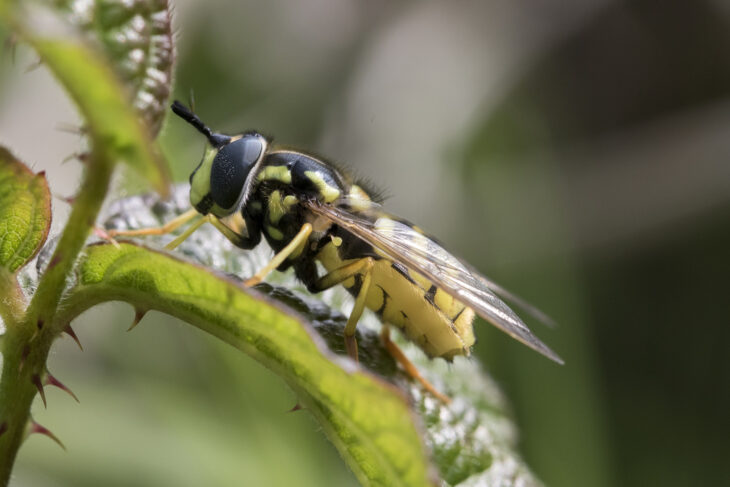Hoverflies are masters of disguise
,
As I have been spending more time out in my garden, I have been noticing the arrival of hoverflies whizzing about our flowers more and more.

These delightful little creatures, called flower flies in the US, are a common sight to us all. But we may not know it! Hoverflies are are masters of disguise. They have adapted to look like wasps and bees – a scary costume to animals big and small – but they are in fact harmless little flies with no stingers.
These flies will copy all sorts of wasps and bumblebees, mimicking their bodies, colours, and furry coats. But take a closer look. Wasps and bees have small eyes, long antenna, four wings and a stinger. Hoverflies have big eyes, small antenna, two wings and no stinger.
These showy insects can execute expert hovering manoeuvres, elaborate costumes and even come with some exotic names. The tiger hoverfly has gorgeous stripes on its back to mimic a wasp. The marmalade hoverfly has delightful little moustaches on its back. The Heineken hoverfly has a long nose to grab nectar which,as you might expect, can reach the parts of a flower others can’t. My personal favourite though is Volucella bombylans, which is such a bumblebee fanboy that it even sports a furry yellow and black striped coat!
Hoverflies always bring a smile and a hearty chuckle to my face. They are a familiar sight for Cumbernauld Living Landscape’s volunteer groups in the warmer months, and for me, they mean that summer is finally here. It is reassuring to have them hovering over our shoulders, looking for juicy flowers to feast on.
I heartily recommend getting out into your parks and gardens to find these elusive creatures. Search the flowers in your garden or local greenspaces and see if you can tells the hoverflies from the wasps and bees!
David Walsh, Project Officer (
